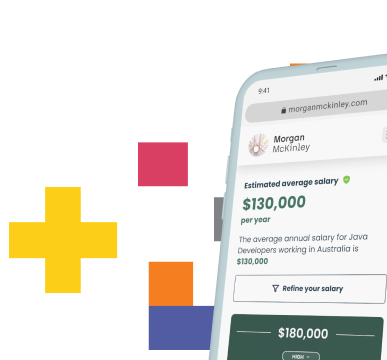Kathy Burr, E-Health: Leadership Tips for Technology

We spoke with Kathy Burr, who currently works as the Senior Enterprise Architecture Manager at E-Health New South Wales. She provides critical architecture advice and guidance to executives, helping them understand the strategic and technical implications of their decisions. Her expertise ensures that initiatives are well-aligned with the organisation’s overall goals and standards.
Synergising Technical Teams
Kathy's role extends beyond traditional executive guidance. She is a key connector, fostering collaboration among diverse technical groups across New South Wales. By leveraging collective expertise, she ensures that solutions are cohesive and effective. As a Business and IT Partner, she provides oversight, advice, and recommendations to maintain alignment with strategic goals and architectural standards.
Furthermore, Kathy's role in governance ensures that technical initiatives adhere to established guidelines and best practices. Her comprehensive approach and dedication to strategic and technical excellence make her an invaluable asset to E-Health New South Wales.
What factors do you think have been critical to the success you have achieved in your career?
Several key elements contribute to my career success. I've had the privilege of working with top-tier organisations such as CBA, Citibank, AMP, eHealth, and Calvary Health Care, often while these companies were at the top of their game. This exposure has enabled me to develop a deep understanding of complex technical environments and the ability to navigate and drive transformative change that aligns with core business needs.
My ability to form strong relationships has been fundamental. Success in any role hinges on the ability to build and maintain professional connections. I’ve found that impactful change is driven by leveraging the collective expertise and understanding of those around you.
It is a creative process, and each day is unique. You must actively listen and navigate technological or interpersonal landscapes. I approach problems like an artist using a paintbrush, combining various elements to create innovative solutions.
My expertise and practical communication skills have also been critical, enabling me to bridge gaps between technical teams and business stakeholders. I’ve always enjoyed translating intricate ideas into straightforward terms, facilitating better collaboration and understanding.
What’s the most valuable piece of advice you received in your career?
The most valuable piece of advice I received early on was that you can’t afford to do things you aren’t interested in. At first glance, it sounds like you would be a lousy worker because work is a mixed bag of tasks. However, I’ve taken it to mean that while you need to do the job at hand, it is crucial to ensure you have purpose in what you do and where you are headed.
When I work with stakeholders, I focus on the purpose of our activities and the outcomes we aim to achieve. Sometimes, people tend to get lost as to what the actual purpose is in the everyday tasks, and this keeps everyone aligned and motivated.
That piece of advice has helped me choose a role aligned with my career goals rather than making side steps.
What's the most challenging situation you faced in your career, and how did you overcome it?
The most challenging situation I faced was transitioning back into the corporate world after running my own IT Consulting and Photography business and having children. Initially, the idea of returning to the office was daunting. I worried that the gap in my experience was larger than it was. This is a concern for many women, especially mothers.
I reached out to a mentor to explore different approaches and undertook some relevant training. What helped was stepping back into the corporate workforce and realising that the gap was more of a perception than a reality. I was entrusted with strategic projects, and advising senior executives helped rebuild my confidence. The key element was taking that first step back into corporate life and valuing a mentor’s encouragement.
If you were starting your career now, what would you do differently?
I am proud of the way my career has progressed; I moved quite succinctly through various roles. Each step has been a valuable learning experience, contributing to my broad and diverse skill set.
If I were starting my career now, I would focus on recognising that no single person can master every field. Unlike in the past where one could be an expert across multiple domains, today’s landscape requires a collaborative approach. Success now hinges on the ability to broker relationships with experts from different areas and leverage their collective knowledge to achieve the best outcomes.
With the advent of AI, the human touch is crucial and gives our lives meaning. It’s about learning, connecting, and turning knowledge into action to bring results—while having fun with people in the process.
Why did you choose to work in the technology space, and what would you say to other females considering a career in technology?
My journey into technology began with a strong interest in the field, driven by my analytical skills, interest in mathematics, problem-solving abilities, and extroverted nature, which enjoys communicating with people. I saw it as a creative role because it has so many different components.
When I started my career at university, I did really well in IT. I was offered a cadetship when I was halfway through university. This opportunity provided me with practical experience at a large organisation while I continued my studies, springboarding me into a successful career in technology.
I would suggest to females looking to have a career in technology that they find strong mentors who can help direct their path and be a sounding board.
Pursue your passions- Go for what you are interested in and want to do.
Take challenges in your stride; they are gifts that help you grow.
Stay curious- Ask questions, as that helps you continue to learn.
As a leader, I emphasise the importance of understanding the broader context and ensuring the team understands the organisation's strategy and how their roles contribute to it. I have found that when people understand the 'why' behind their tasks, it gives their work more meaning. It helps them see how they are contributing to something larger than themselves.
By sharing my journey and insights, I hope to inspire more women to enter and thrive in the technology sector, contributing to its dynamic and inclusive future.














